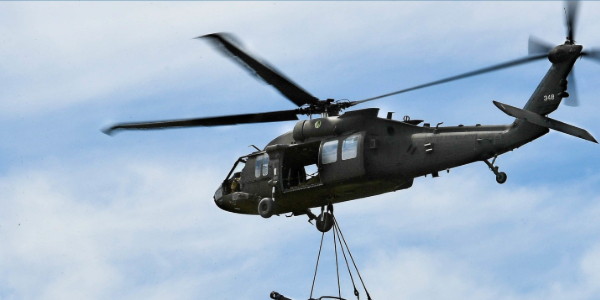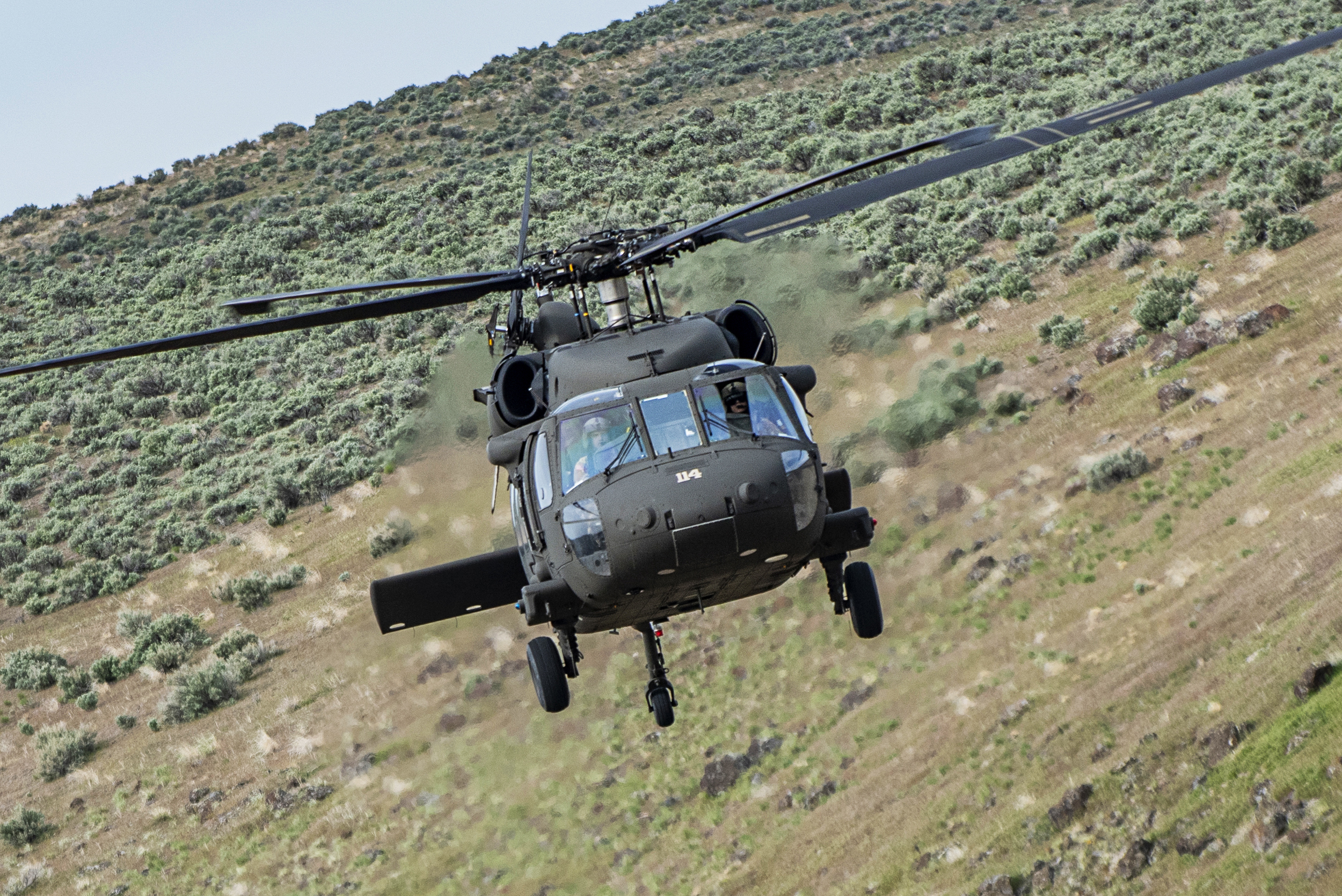Blackhawk Helicopters: Changing Civil and army Aeronautics
The intro of Blackhawk helicopters in the late 1970s noted a considerable advancement in both armed forces and civil air travel. As we examine their profound impact, it is important to take into consideration the future trajectory of Blackhawk aviation and the challenges that may exist in advance in a rapidly changing landscape.
History of Blackhawk Helicopters
Historically, the advancement of Blackhawk helicopters began in the 1960s, driven by the United States Military's requirement for a versatile utility aircraft to change the aging fleet of helicopters in service back then. The Army looked for a platform that could carry out a range of objectives, including troop transportation, medical emptying, and logistical assistance, with improved rate, payload, and range capacity. In 1972, Sikorsky Airplane Corporation was awarded the contract for the brand-new style, which would become called the UH-60 Blackhawk.
The Blackhawk's style was identified by advanced innovations, including a twin-engine configuration, a four-blade major blades system, and a robust airframe made for longevity in battle situations. The first trip of the prototype occurred in 1974, and by 1979, the Blackhawk entered solution, quickly becoming a cornerstone of the Army's aviation capabilities. Its functional flexibility and integrity were apparent in various military operations throughout the 1980s and past. Over the years, the Blackhawk has actually undertaken numerous upgrades, guaranteeing its significance in contemporary war while likewise leading the method for its adjustment in civil aeronautics roles, further strengthening its standing as an iconic airplane.
Military Applications and Impact
The flexibility of the UH-60 Blackhawk has actually made it an important property in different military applications because its introduction. Designed for multi-role abilities, the Blackhawk sustains troop transportation, medevac operations, reconnaissance objectives, and logistical assistance. Its ability to operate in varied atmospheres, from metropolitan setups to tough surfaces, boosts its performance in battle and altruistic missions alike.
Blackhawks have played essential duties in numerous armed forces procedures, consisting of the Gulf War and procedures in Somalia and Iraq. They excel in rapid troop deployment and emptying, dramatically enhancing functional effectiveness and response times. The helicopter's advanced avionics and flight systems permit accuracy missions under negative weather and at evening, consequently making the most of goal success prices.
Additionally, the Blackhawk's robust building and construction and powerful efficiency enable it to withstand aggressive atmospheres, making it a favored choice for special operations forces. Its effect extends past straight combat functions, as it has additionally contributed in catastrophe relief and recovery efforts, showcasing its adaptability and reliability. The ongoing development of the Blackhawk's capabilities ensures its importance in contemporary armed forces approach, solidifying its tradition as a cornerstone of armed forces air travel.
Technological Technologies
Various technical innovations have actually substantially improved the capacities of the UH-60 Blackhawk, guaranteeing it remains at the forefront of armed forces aeronautics. Among one of the most noteworthy developments is the assimilation of innovative avionics systems, which give pilots with real-time data, maximizing situational awareness and decision-making. The intro of digital cabin display screens changes standard analog tools, enhancing operations and decreasing pilot work.
In addition, the unification of composite products has actually boosted the helicopter's structural honesty while minimizing weight, thereby boosting gas efficiency and haul capacity. The Blackhawk's blades system has additionally progressed, featuring quieter and more effective blades that lessen sound trademarks, important for covert procedures.
Additionally, the execution of fly-by-wire innovation boosts flight control accuracy and security, enabling for much better efficiency in numerous atmospheres. Improved communication systems enable reputable and safe info exchange, helping with coordinated objectives.
The adaptability of the Blackhawk has additionally been augmented via modular style, enabling fast reconfiguration to satisfy varied mission demands. These developments collectively make sure that the UH-60 Blackhawk stays an important asset in the toolbox of contemporary army forces, with the ability of reacting effectively to a variety click for source of functional difficulties.
Civilian Profits and makes use of


Additionally, Blackhawks are employed in firefighting procedures, specifically in challenging surfaces. Outfitted with water buckets or aerial firefighting innovations, they enhance the capacities of ground staffs, making it possible for a lot more effective responses to wildfires. The helicopters have actually located functions in legislation enforcement and search-and-rescue goals, strengthening public safety and security efforts in city and wilderness setups.
In the realm of infrastructure assistance, Blackhawk helicopters are utilized for transportation of workers and tools to hard-to-reach places, such as oil well and remote construction sites. The adaptability of these aircraft, integrated with their robust design, offers both performance and reliability, making them indispensable assets across different markets in the civilian landscape. Therefore, the Blackhawk helicopter remains to make significant payments past its military heritage.
Future of Blackhawk Aeronautics
Emerging modern technologies and moving functional needs are positioned to form the future of Blackhawk aeronautics dramatically. As private and military industries significantly focus on convenience and performance, technologies such as advanced avionics, expert system, and improved materials will certainly redefine the explanation abilities of Blackhawk helicopters - Blackhawk Helicopter. These improvements will not only improve trip efficiency but also boost goal planning and execution with real-time data analysis and decision-making assistance

In addition, sustainability will certainly end up being a focal point in future Blackhawk layouts. Establishing hybrid or electrical propulsion systems could reduce the environmental effect of military and noncombatant operations, lining up with global efforts to combat environment modification.
Final Thought
In final thought, Blackhawk helicopters have actually substantially transformed both armed forces and civil air travel because their beginning. As future developments in aeronautics technology arise, the Blackhawk's role is most likely to increase, strengthening its status as an essential property throughout varied industries in the coming years.
The intro of Blackhawk helicopters in the late 1970s noted a considerable evolution in both armed forces and civil air travel. The ongoing development of the Blackhawk's capabilities ensures its relevance in contemporary military approach, strengthening its heritage as a cornerstone of army air travel.
Countless technological advancements have actually considerably boosted the capacities of the UH-60 Blackhawk, ensuring it continues to be at the forefront of army air travel. As armed forces and noncombatant sectors progressively prioritize adaptability and efficiency, advancements such as sophisticated avionics, synthetic knowledge, and boosted products will certainly redefine the capabilities of Blackhawk helicopters.In conclusion, Blackhawk helicopters have actually considerably changed both army and civil air travel since their inception.
Comments on “Discover the Advanced Qualities and Tradition of the Blackhawk Helicopter in Modern Aviation”